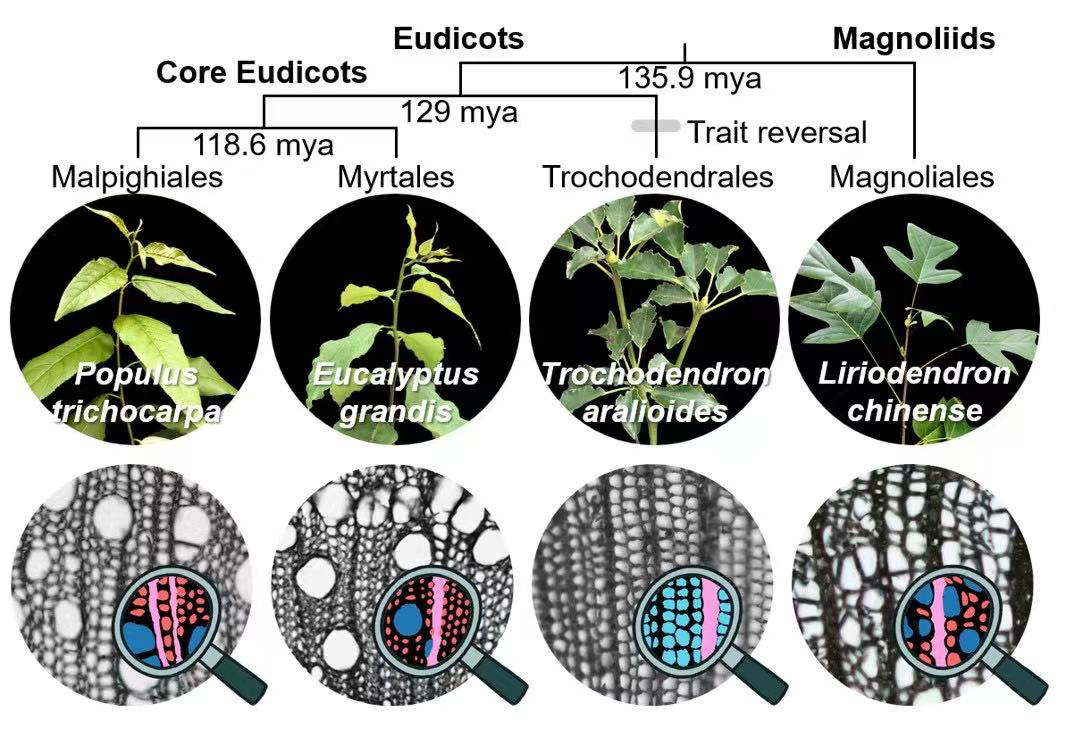Development and Evolution of Xylem: the Most Abundant Tissue on Earth
Xylem is a plant tissue for mechanical support and water transportation, as well as a key natural resource and carbon sink. To understand xylem formation, our team analyzed single-cell transcriptomes of four tree species representing divergent lineages of flowering plant (angiosperm) evolution. The developmental trajectories of ray cells are highly conserved across angiosperms. The tracheids of Trochodendron aralioides (a native Taiwanese species without libriform fibers and vessel elements) exhibit strong transcriptomic similarity to vessel elements rather than libriform fibers of other eudicots. The results provide a cell atlas for xylem development and new perspectives for plant tissue evo-devo research.
Genome Biology 24, 3 (2023).
DOI: 10.1186/s13059-022-02845-1